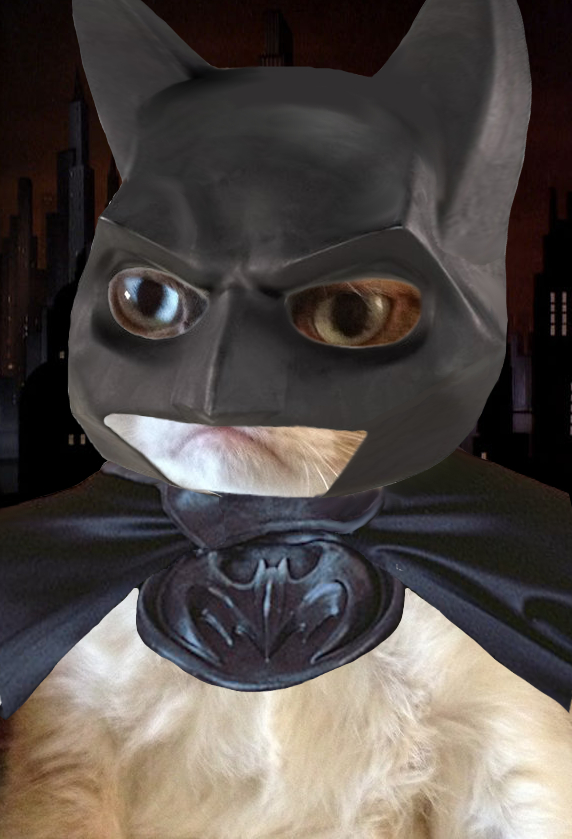Unclipped: Difference between revisions
(Page created) |
Tag: Undo |
||
| Line 1: | Line 1: | ||
== Introduction == | == Introduction == | ||
| Line 9: | Line 6: | ||
<gallery caption="Saving Unclipped Images" mode=packed widths=600px heights=600px> | <gallery caption="Saving Unclipped Images" mode=packed widths=600px heights=600px> | ||
File:Batcat.jpg|This is a raw file of a scene with a very high dynamic range. Notice that the histogram shows clipped shadows and highlights. | File:Batcat.jpg|This is a raw file of a scene with a very high dynamic range. Notice that the histogram shows clipped shadows and highlights. | ||
File:Batcat.jpg|The raw file does however contain data across the whole dynamic range, including those shadows and highlights which appear clipped. We know this to be the case because adjusting exposure compensation in RawTherapee reveals those details. However, there | File:Batcat.jpg|The raw file does however contain data across the whole dynamic range, including those shadows and highlights which appear clipped. We know this to be the case because adjusting exposure compensation in RawTherapee reveals those details. However, there are situations when one needs to manipulate the image as little as possible at this point, which precludes manipulating the exposure compensation or performing dynamic range compression. | ||
File:Batcat.jpg|When saved to an ordinary 16-bit TIFF file, what appeared clipped before is now really clipped - the data is lost, one cannot recover the shadows nor the highlights from this saved TIFF file. Here an exposure compensation of -2EV was performed in GIMP, and the results are unusable. | File:Batcat.jpg|When saved to an ordinary 16-bit TIFF file, what appeared clipped before is now really clipped - the data is lost, one cannot recover the shadows nor the highlights from this saved TIFF file. Here an exposure compensation of -2EV was performed in GIMP, and the results are unusable. | ||
File:Batcat.jpg|The solution is to apply this "Unclipped" profile, as described below in the "Usage" section, and save to a floating-point 16-bit or 32-bit TIFF file. The resulting TIFF file contains data across the whole dynamic range, and even strong exposure adjustments reveal perfectly intact details. | File:Batcat.jpg|The solution is to apply this "Unclipped" profile, as described below in the "Usage" section, and save to a floating-point 16-bit or 32-bit TIFF file. The resulting TIFF file contains data across the whole dynamic range, and even strong exposure adjustments reveal perfectly intact details. | ||
Revision as of 12:10, 4 March 2019
Introduction
The "Unclipped" processing profile (introduced in RawTherapee 5.6) allows one to save an image in a way which preserves data across the whole tonal range, including clipped shadows and highlights, thus allowing for strong exposure adjustments and dynamic range compression of the saved file while retaining detail in the shadows and highlights. This may be desired not only for scientific purposes but also when the saved image is destined for further manipulation and the final exposure is yet unknown, such as can be the case when stitching panoramas which require exposure adjustments so that images seamlessly blend into one another.
- Saving Unclipped Images
The raw file does however contain data across the whole dynamic range, including those shadows and highlights which appear clipped. We know this to be the case because adjusting exposure compensation in RawTherapee reveals those details. However, there are situations when one needs to manipulate the image as little as possible at this point, which precludes manipulating the exposure compensation or performing dynamic range compression.
Not all tools can be used when saving an unclipped image. The following tools or settings are known to be incompatible with saving unclipped images in RawTherapee 5.6, and so are disabled by this processing profile:
- Exposure tone curves,
- Vibrance,
- Before/After curves in the Black-and-White tool,
- Film Simulation,
- RGB Curves in luminosity mode,
- DCP look table,
- CIECAM02
Usage
- Apply the "Unclipped" profile. This profile disables those tools and settings which are incompatible with saving unclipped images. Ensure that your output ICC profile is either v4, or a linear tone response curve v2.
- If you want to apply this profile and reset all tools to safe default values, then set the processing profile fill mode to "Filled"
 before applying this profile.
before applying this profile. - If you want to apply this profile while preserving existing adjustments, then set the processing profile fill mode to "Preserve"
 before applying this profile.
before applying this profile.
- If you want to apply this profile and reset all tools to safe default values, then set the processing profile fill mode to "Filled"
- Save the image as either a 16-bit floating-point TIFF or a 32-bit floating-point TIFF.
